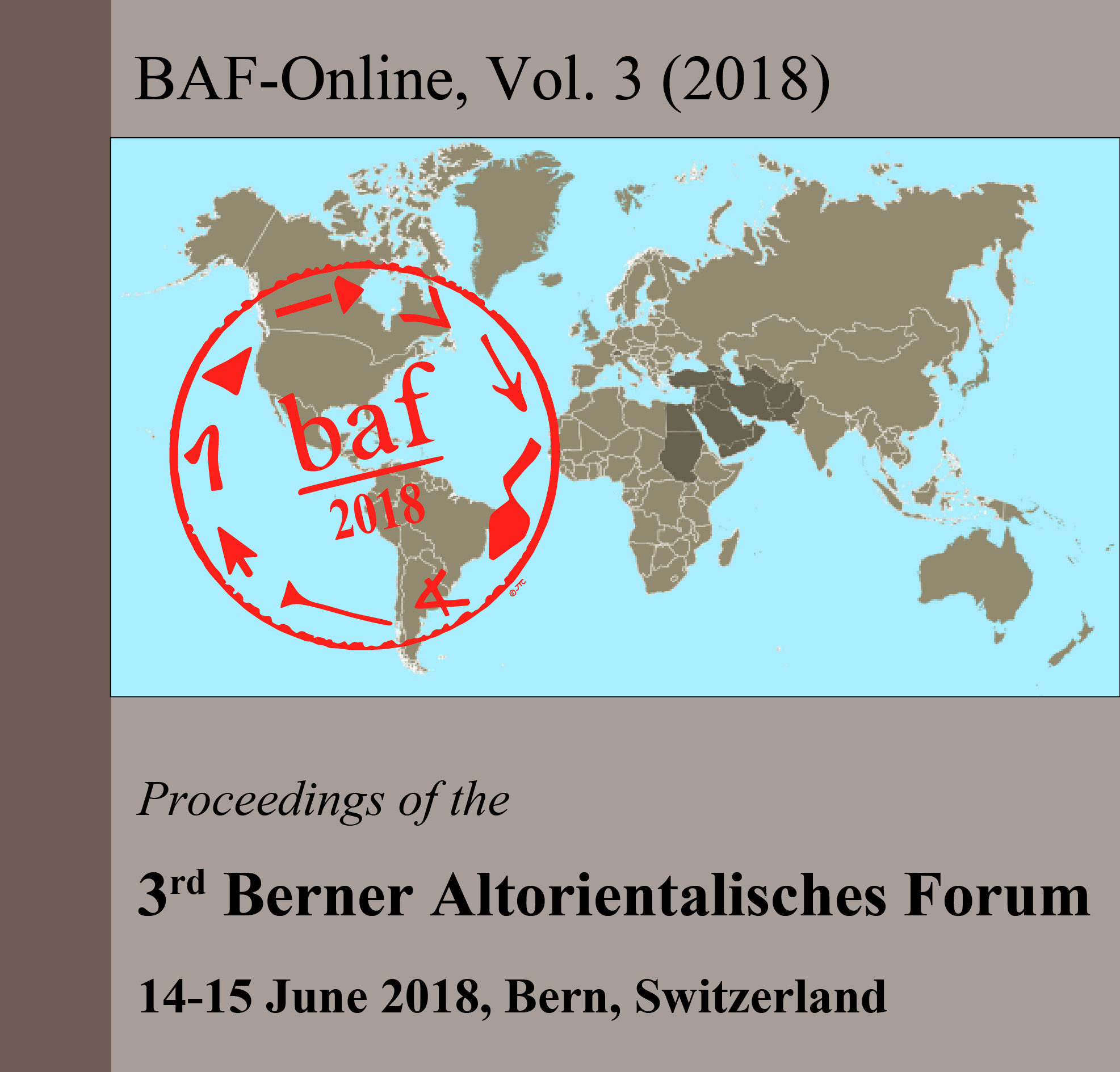Sacked and Cursed? New data on the transition from the city-state to the Hittite capital Hattuša
DOI:
https://doi.org/10.22012/baf.2018.14Abstract
When: Karum Period: First centuries of the 2nd millennium B.C. when Assyrian and Anatolian merchants took part in large-scale commercial exchanges between Aššur and central Anatolia. Most of the epigraphic finds come from the 19th century BC, and the 18th century is less known. We don’t know how the commercial exchanges came to an end. Until the establishment of the administration at the Hittite capital Hattuša/Boğazköy (1650), there is a hiatus in the epigraphical records for more than a century.
Who: Anitta, son of Pithana, an ambitious ruler who created one of the first Kingdom in Central Anatolian (modern Turkey) in the mid 18th century.
Where: Boğazköy (modern name, in Central Anatolia) was a city called Ḫattuš and was an exchange place in the Anatolian Network of the Karum period. The site was selected as the capital of the Hittites around 1650 by Ḫattušili I, the first well attested Hittite King.
Published
Issue
Section
License

This work is licensed under a Creative Commons Attribution 4.0 International License.



